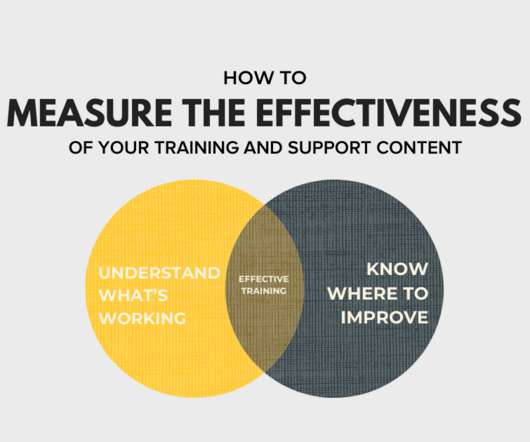Kirkpatrick Revisited | Social Learning Blog
Dashe & Thomson
APRIL 17, 2011
I have included Kirkpatrick’s Four Levels of Evaluation in every proposal I have ever written, and I wanted to hear from Kirkpatrick himself regarding his take on the current state of evaluation and whether his four levels are still viable. Well, based on where Kirkpatrick and his son James are today, I was completely wrong.










































Let's personalize your content